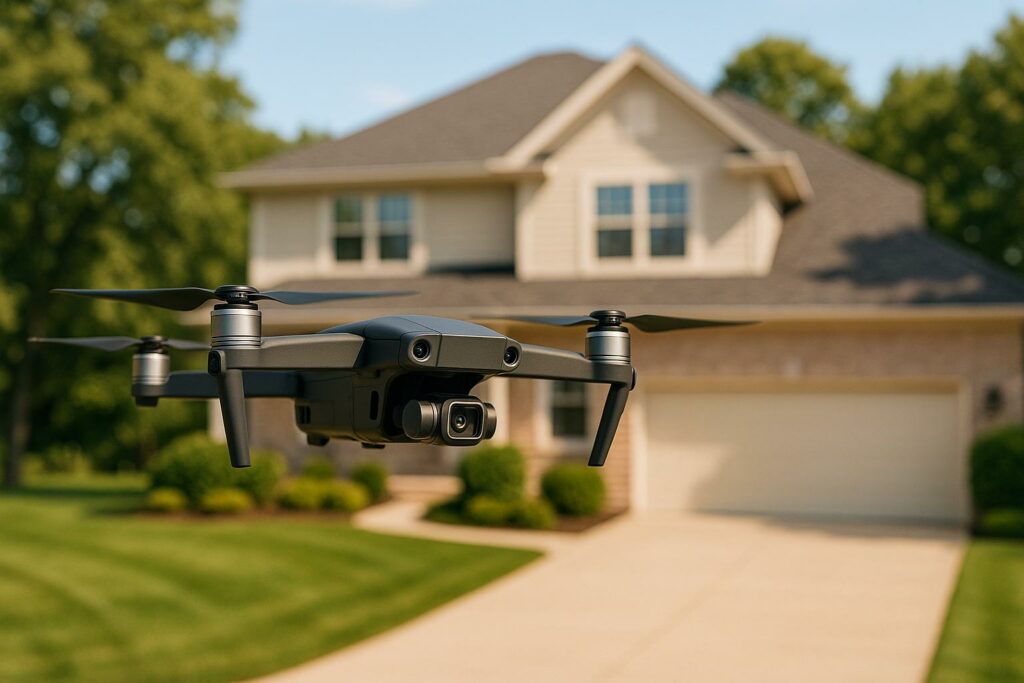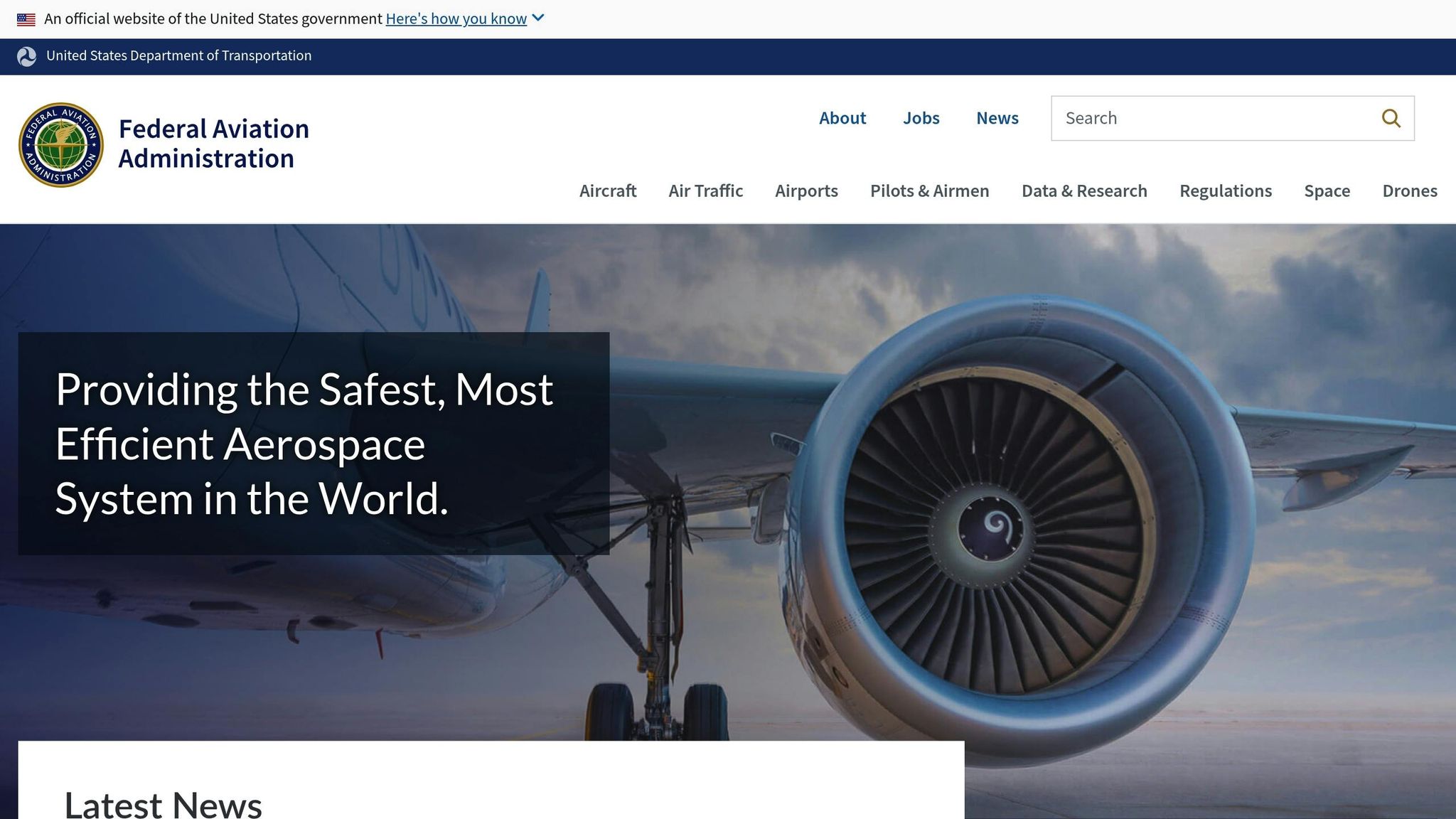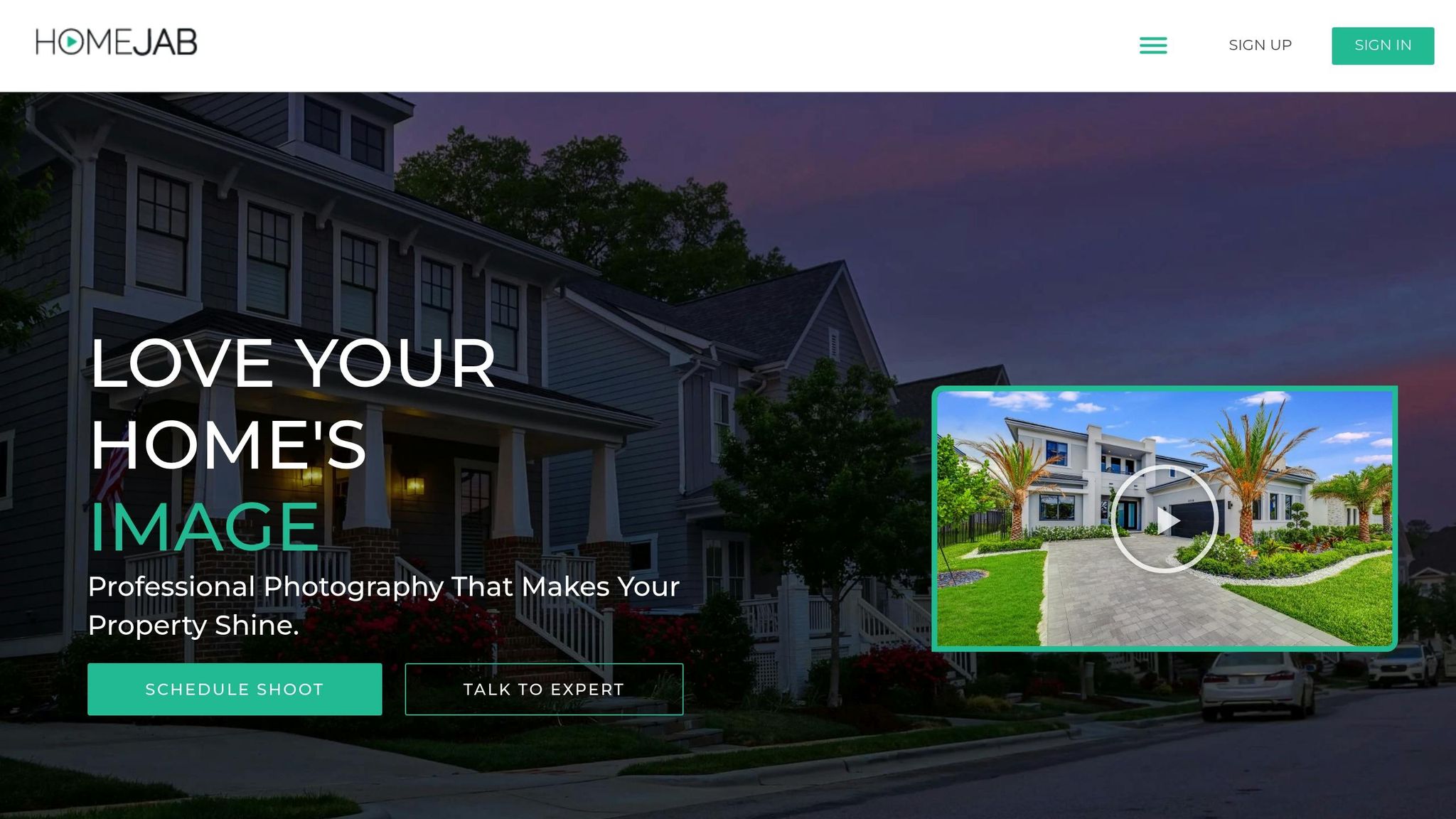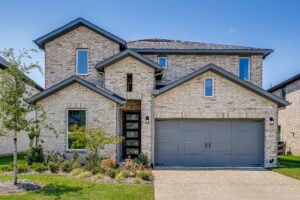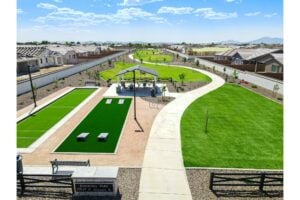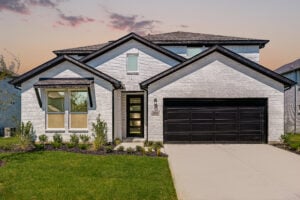Using drones for real estate is highly effective but comes with strict legal requirements. Here’s what you need to know to stay compliant and avoid hefty fines:
- FAA Certification: You need an FAA Part 107 license to operate drones commercially. This includes passing an exam, maintaining certifications, and following safety protocols.
- Drone Registration: Drones over 0.55 lbs must be registered with the FAA. Registration costs $5 and is valid for 3 years.
- Remote ID Compliance: As of March 2024, drones must broadcast identification and location during flights.
- Local and State Permits: Check local laws, as states like New York and Virginia have additional permit requirements.
- Privacy Laws: Always get written consent from property owners and avoid capturing private areas.
- Insurance: Liability insurance ($1M coverage recommended) protects against damages and legal risks.
- Safety Rules: Follow FAA guidelines, including flying below 400 feet, maintaining line of sight, and avoiding restricted airspace.
| Requirement | Details | Cost |
|---|---|---|
| FAA Part 107 License | Pass certification exam | ~$175 exam fee |
| Drone Registration | Register with FAA | $5 per drone |
| Remote ID Compliance | Built-in or external broadcast module | Varies by drone model |
| Liability Insurance | Covers accidents and damages | ~$600–$800/year |
Key Tip: Partnering with certified drone service providers ensures compliance and high-quality results. Non-compliance can lead to fines up to $27,500 or criminal penalties. Stay informed and follow all regulations to use drones legally and effectively in real estate.
Drone Rules Simplified: Top 10 Must-Know FAA Regulations
1. Required Permits and Licenses
If you’re planning to use drones for real estate, you’ll need to secure both federal and local certifications. The Federal Aviation Administration (FAA) oversees commercial drone operations and enforces strict penalties for violations.
1.1 FAA Part 107 License Requirements
To fly drones commercially, you must obtain the FAA Remote Pilot Certificate, commonly known as the Part 107 license. Here’s what you need to know about the process:
- Meet Basic Eligibility
You must be at least 16 years old, fluent in English, and in good physical and mental condition to operate a drone safely.
- Complete the Certification Process
- Create an IACRA (Integrated Airman Certification and Rating Application) profile to get an FAA Tracking Number.
- Pass the "Unmanned Aircraft General – Small (UAG)" exam at an FAA-approved testing center.
- Submit FAA Form 8710-13 through IACRA.
- Undergo a TSA security background check.
- Receive a temporary certificate while waiting for your permanent license to arrive by mail.
| Certificate Maintenance | Requirement | Timeline |
|---|---|---|
| Initial Certification | Pass the UAG exam | Valid upon passing |
| Recurrent Training | Complete an online course | Every 24 months |
| Certificate Validity | Have certifications ready | During all flights |
Once you’ve secured your FAA license, the next step is to check for any state or local permits needed to comply fully with regulations.
1.2 Local and State Permits
After meeting federal requirements, don’t overlook local and state regulations. These can vary widely depending on your location. Here are some examples:
| State | Key Regulations | Permit Requirements |
|---|---|---|
| New York | NYC requires an NYPD permit for takeoffs and landings | Special permit required |
| Virginia | State parks require a special use permit | For commercial operations only |
| Denver, CO | Drone use is prohibited in parks and downtown areas | Event-specific permits needed |
"Violating the drone regulations puts lives at risk in the air and on the ground. Flying a small drone means you are flying an aircraft, and unsafe behavior will cost you." – FAA Administrator Mike Whitaker
Failing to comply with FAA rules can lead to fines of up to $75,000 per violation. Ensuring you have all necessary local permits is just as important as meeting federal requirements.
Quick Compliance Tips:
- Always check local regulations before flying.
- Get written permission from property owners.
- Keep your FAA certifications on hand during operations.
- Be aware of municipal restrictions, especially in urban areas.
- Familiarize yourself with state-specific privacy laws.
2. Drone Registration Rules
If you’re operating drones for commercial purposes, like real estate photography, you must register them with the Federal Aviation Administration (FAA). This registration ensures your operations comply with federal laws and regulations.
2.1 How to Register with the FAA
For drones weighing 0.55 pounds (250 grams) or more, registration is mandatory through the FAA DroneZone platform. Each drone used for commercial purposes must be registered individually under Part 107 rules.
| Registration Requirement | Details | Timeline |
|---|---|---|
| Registration Fee | $5 per drone | Valid for 3 years |
| Display Requirements | FAA registration number must be visible on the drone | During operations |
| Proof of Registration | Digital or paper certificate | Required during all flights |
Here’s how you can register your drone:
- Step 1: Visit the FAA DroneZone website.
- Step 2: Choose the "Part 107 Registration" option for commercial drone use.
- Step 3: Provide the necessary details, including:
- Your physical and mailing address
- Email and phone number
- Your drone’s make and model
- The Remote ID serial number, if applicable
"All drones must be registered, except those that weigh 0.55 pounds or less (less than 250 grams) and are flown under the Exception for Limited Recreational Operations." – FAA
Keep in mind that failing to register your drone could lead to serious penalties. Once your registration is complete, make sure your drone also complies with Remote ID requirements to meet all FAA standards.
2.2 Remote ID Rules
Starting March 16, 2024, all registered drones must comply with Remote ID requirements. Think of Remote ID as a digital license plate for your drone – it broadcasts your drone’s identification and location during flight.
You can meet Remote ID requirements in one of three ways:
- Standard Remote ID Drone: These drones come equipped with built-in Remote ID capabilities from the manufacturer. When registering, you’ll need to provide the drone’s Remote ID serial number.
- Remote ID Broadcast Module: If your drone was manufactured before the Remote ID rule, you can attach an external broadcast module. After installation, update your registration details on the FAA DroneZone platform.
- FRIA Operations: You can fly in FAA-Recognized Identification Areas (FRIAs), but this option limits where you can operate your drone.
| Remote ID Component | Requirement | Compliance Deadline |
|---|---|---|
| Standard Remote ID | Built-in broadcasting capability | Immediate for new drones |
| Broadcast Module | External attachment | Required for drones made before 2024 |
| Registration Update | Add Remote ID serial number | After installing the module |
Key Compliance Tips:
- Use the FAA’s Declaration of Compliance System to confirm your drone meets Remote ID requirements.
- Ensure your drone displays the FAA-mandated Remote ID compliance label.
- Keep your registration information up to date to avoid operational issues.
- Always carry proof of registration during flights.
3. Flight Zones and Restrictions
Navigating airspace restrictions is a key aspect of legal drone operations in real estate photography. The Federal Aviation Administration (FAA) has established clear rules for different airspace classifications, outlining where drones can and cannot fly. This section explains how to work within those guidelines effectively.
3.1 LAANC System Permits
The Low Altitude Authorization and Notification Capability (LAANC) system provides near-instant approval for drone flights in controlled airspace. This automated tool is available at 726 airports across the U.S., making it easier for drone pilots to operate legally.
| Authorization Type | Processing Time | Altitude Limit | Validity |
|---|---|---|---|
| Standard LAANC | Immediate | Up to 400 feet | 90 days advance |
| Further Coordination | Within 72 hours | Above grid ceiling | As specified |
| Night Operations | Immediate | As approved | As specified |
Steps to Obtain LAANC Authorization:
- Select an FAA-approved UAS Service Supplier.
- Set up your pilot profile, including Part 107 certification.
- Submit your flight plan with location and altitude details.
- Wait for automated approval.
- Confirm authorization before starting your flight.
"In December 2024, Drone Pilot Ground School reported that LAANC authorization allows drone pilots to get immediate authorization to fly in controlled airspace, which previously required waiting up to three months for manual approval via FAADroneZone. The new process automates the review of UAS Facility Maps, providing near-instant approvals if the flight complies with the map’s data." – Drone Pilot Ground School, December 17, 2024
For flights that exceed LAANC’s capabilities, you’ll need to apply for special waivers, as detailed in the next section.
3.2 Special Flight Waivers
When planning operations that fall outside the standard Part 107 rules, such as flying beyond visual line of sight or over people, you’ll need to apply for a special waiver through the FAA’s DroneZone portal. These waivers are manually reviewed by FAA officials.
Key Scenarios Requiring Waivers:
- Flying after daylight hours
- Operating above 400 feet
- Conducting flights over people
- Beyond visual line of sight operations
Additional Pre-Flight Checks:
- Use the B4UFLY app to check for restrictions.
- Review current Notices to Air Missions (NOTAMs).
- Verify any Temporary Flight Restrictions (TFRs).
- Confirm compliance with local drone regulations.
For operations in controlled airspace that need both a waiver and airspace authorization, you must submit separate applications through FAA’s DroneZone. While LAANC handles airspace authorizations, pilots are responsible for checking weather and other restrictions independently.
Now that airspace compliance is covered, we’ll move on to the safety procedures essential for successful drone operations.
sbb-itb-82c5f45
4. Safety Rules and Procedures
Adhering to FAA safety protocols is essential to ensure the protection of both property and lives during aerial drone operations.
4.1 Flight Limits and Conditions
FAA regulations set clear boundaries for drone flights, which include maintaining a visual line of sight at all times. Here are the key operational limits:
| Condition | Requirement |
|---|---|
| Flight Hours | 30 minutes before sunrise to 30 minutes after sunset |
| Visibility | Minimum of 3 miles from the control station |
| Maximum Altitude | 400 feet above ground level |
| Night Operations | Anti-collision lighting is mandatory |
Weather plays a major role in drone performance and safety. To ensure secure operations, always consult trusted weather apps before flying.
Key Weather Conditions to Avoid:
- Strong winds
- Heavy rain or snow
- Fog that reduces visibility
- Extreme temperatures that could impair battery performance
- High humidity, which may harm electronic components
4.2 Pre-Flight Safety List
A detailed pre-flight inspection is vital for safe and efficient drone flights. The FAA Advisory Circular 107-2A highlights the importance of carefully checking both equipment and environmental factors before takeoff.
Must-Have Safety Gear:
- Propeller guards
- Landing pad
- GPS tracker
- Spare batteries and chargers
- First aid kit
- ND filters for adjusting to different lighting conditions
| ND Filter | Light Reduction | Best For |
|---|---|---|
| ND4 | 2 stops | Cloudy days |
| ND8 | 3 stops | Partly cloudy weather |
| ND16 | 4 stops | Bright, sunny days |
Key Pre-Flight Checks:
- Drone Physical Condition
Examine the airframe, propellers, and attachment points for any signs of wear or damage. - Electronic Systems
Verify battery charge levels, GPS signal strength, and control link connectivity. Ensure that the firmware is updated and all systems are calibrated. - Environmental Assessment
Inspect the flight area for obstacles like power lines, trees, and buildings. Also, designate clear zones for takeoff and landing.
Next, the focus shifts to understanding privacy laws and securing the necessary insurance for drone operations.
5. Privacy Laws and Insurance
5.1 Privacy Rules and Boundaries
When using drones for real estate purposes, it’s crucial to respect privacy regulations. Many states have introduced laws to address drone-related privacy concerns, so understanding these rules is a must.
State-Specific Privacy Laws
| State | Law/Statute | Privacy Restriction |
|---|---|---|
| California | AB 856 | Prohibits capturing images that invade someone’s personal privacy without consent. |
| Florida | SB 766 | Bans capturing images of private property where there’s a reasonable expectation of privacy. |
| Texas | HB 912 | Prohibits capturing or sharing images without the property owner’s consent. |
| Virginia | State Code | Flying within 50 feet of a residence without permission can result in a misdemeanor. |
Essential Privacy Guidelines
- Always get written consent from property owners before launching drone operations.
- Adhere to state-specific rules about how close drones can fly to private residences.
- Avoid filming or photographing neighboring properties or private areas.
- Edit out any private or identifying features accidentally captured during flights.
- Keep a record of all property owner permissions for future reference.
"The FAA does not regulate privacy, but local privacy laws may apply to drone operations." – Federal Aviation Administration
Make sure to review these privacy rules before moving on to insurance requirements.
5.2 Required Insurance Coverage
While the FAA doesn’t mandate drone insurance, having it is a smart move to protect yourself from potential liabilities. Comprehensive coverage ensures you’re prepared for any accidents or damages.
Insurance Cost Breakdown
| Coverage Type | Cost Range | Coverage Amount |
|---|---|---|
| On-Demand Liability | $10/hour | $1 million |
| Monthly Liability | $62/month | $1 million |
| Annual Liability | $600–$800/year | $1 million |
| Hull Insurance | 8–12% of drone value | Equipment value |
Essential Coverage Components
- Liability Insurance
- Covers third-party property damage and bodily injury claims.
- Some policies may also include coverage for personal injury.
- Hull Insurance
- Protects against damage to the drone itself and its onboard systems.
- Can also include coverage for ground equipment used during operations.
- Additional Protection
- Consider non-owned coverage for rented drones or equipment.
- Payload insurance can be valuable for specialized gear, like high-end cameras.
Record Keeping Requirements
To ensure smooth operations, maintain detailed records, including:
- Flight logs and maintenance records.
- Safety protocols and pilot certifications.
- Written permissions from property owners.
For commercial drone operations, liability coverage of at least $1 million is considered standard. Hull insurance should cover the full replacement cost of your equipment, especially since professional drones can easily cost over $10,000.
These insurance protections, combined with privacy compliance and safety measures, provide a solid foundation for working with certified drone service providers.
6. Working with Drone Service Companies
6.1 Checking Company Credentials
When hiring a drone service provider for real estate photography, verifying their credentials is a critical step. This ensures the company operates legally and maintains a high standard of professionalism. A reliable provider should have no hesitation in sharing proof of their qualifications and insurance. Once you’ve confirmed their credentials, you can confidently move forward with a provider that meets these expectations.
Key Credentials to Verify
| Credential Type | What to Verify | Why It Matters |
|---|---|---|
| FAA Certification | Part 107 License | Required for legal commercial operations |
| Insurance | Liability Coverage | Protects against accidents or damages |
| Equipment | Proof of Drone Registration | Ensures compliance with FAA regulations |
| Local Permits | State/Municipal Licenses | Meets local legal requirements |
| Portfolio | Previous Work Samples | Demonstrates quality and experience |
After verifying these credentials, you can shift your attention to the specific services the company provides.
Necessary Documentation
Request the following from your drone service provider to confirm their qualifications:
- A valid FAA Part 107 certification
- Proof of liability insurance
- Drone registration details
- Examples of past real estate projects
6.2 HomeJab Drone Services
Once you’ve confirmed a provider’s credentials, it’s time to evaluate their service offerings. HomeJab stands out by providing FAA-certified and insured drone services, specifically tailored to enhance real estate listings with stunning aerial visuals.
What HomeJab Offers
- Certified and insured drone pilots
- High-resolution panoramic aerial photography
- Visuals captured from multiple angles
- Fast delivery to meet listing deadlines
- Services for residential, commercial, and land properties
This all-in-one package helps real estate agents present properties in the best possible light while adhering to legal requirements.
Pricing Options
| Service Package | Price | Deliverables |
|---|---|---|
| Aerial Photos | $225 | 15 high-definition aerial images |
| Aerial Video | $225 | 1–2 minute HD drone video |
| Combined Package | $280 | 15 HD images + 1–2 minute HD drone video |
Properties featuring professional aerial imagery are 68% more likely to sell compared to those without. This makes professional drone services a smart investment for real estate professionals aiming to stand out in the market.
"Our professional drone pilots offer a smooth experience from take-off to landing. They’re strictly vetted for quality assurance, FAA-certified, licensed, and insured to bring out the best in your property."
– HomeJab.com
HomeJab’s services shine in showcasing:
- Neighborhood amenities and nearby attractions
- Architectural features from unique perspectives
- Landscapes and outdoor elements that add value to properties
Conclusion: Following Drone Laws Successfully
Staying on top of drone regulations means carefully following all legal and safety guidelines. Interestingly, 83% of home sellers prefer agents who use drone photography, which highlights its growing importance in real estate.
Here’s a quick look at the trade-offs involved:
| Aspect | Impact on Compliance |
|---|---|
| Legal Liability | Professional services handle regulatory compliance, reducing risks. |
| Time Management | Quick 24–48 hour turnaround compared to the time required for extensive training. |
| Quality Control | Reliable, professional results versus inconsistent outcomes from DIY approaches. |
| Investment | $5 drone registration fee and FAA certification costs versus pay-as-you-go pricing. |
These considerations reflect the broader safety, legal, and operational factors discussed earlier.
"Any opportunity you have to further educate the buyer to the property they’re purchasing is a win-win for everybody".
This quote emphasizes the value of using certified drone services. Collaborating with professional providers like HomeJab ensures everything is covered – from FAA Part 107 licensing and up-to-date insurance to compliance with state and local privacy laws, property owner permissions, and airspace restrictions.
The numbers speak for themselves: properties featuring professional aerial imagery are 68% more likely to sell. This statistic underscores the power of well-executed drone photography in boosting property appeal.
As drone laws continue to change, working with experts who stay current on compliance ensures your business remains protected while delivering stunning, high-quality aerial visuals.
FAQs
How can I make sure my drone meets the new Remote ID rules starting March 16, 2024?
To meet the new Remote ID requirements starting March 16, 2024, here’s what you need to do:
- Select a compliance option: Either use a Standard Remote ID drone that automatically broadcasts identification and location data, or equip your drone with a Remote ID broadcast module.
- Register your drone: Ensure your drone is registered with the FAA, including the serial number of your Standard Remote ID drone or the attached broadcast module.
- Transmit required data: Your drone must broadcast key information such as its unique ID, location, altitude, speed, and the location of the control station.
Make sure to keep up with the latest FAA updates to stay compliant and avoid any penalties.
How do I ensure a drone service provider meets FAA requirements for real estate photography?
To make sure a drone service provider meets FAA regulations for real estate photography, here’s what you should look for:
- Ensure they hold an FAA Remote Pilot Certificate under Part 107, which is mandatory for commercial drone operations.
- Confirm the drone is registered with the FAA and has a visible registration number.
- Request proof of their business license, insurance, and FAA Certificate of Aircraft Registration.
It’s also a good idea to review their safety procedures, like using a detailed pre-flight checklist, and take a look at their previous work to gauge their professionalism and expertise.
What should real estate agents consider when choosing liability insurance for drone use?
When choosing liability insurance for commercial drone operations in real estate, it’s crucial to ensure the policy covers third-party bodily injury and property damage, with coverage limits typically ranging from $1 million to $5 million. Double-check that the policy specifically includes drone-related activities and aligns with any client or employer requirements.
It’s also worth looking for policies that cover legal defense costs and damages caused during drone use. Verify that the insurance is valid in all areas where you plan to operate your drone and adheres to local regulations. Having the right coverage not only protects your business but also helps you navigate potential risks with confidence.

